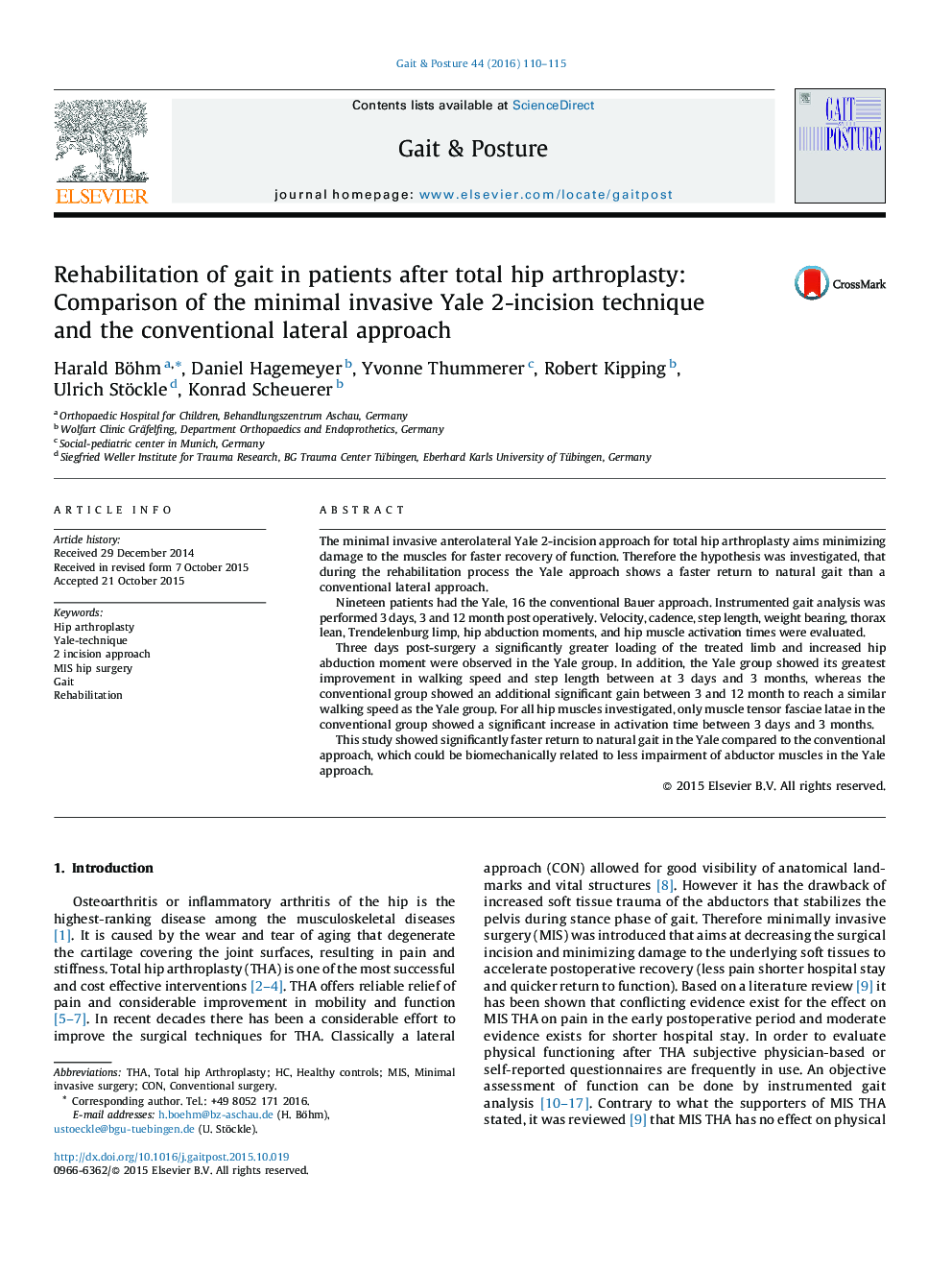| Article ID | Journal | Published Year | Pages | File Type |
|---|---|---|---|---|
| 4055545 | Gait & Posture | 2016 | 6 Pages |
•First study that showed recovery of gait after total hip arthroplasty with the minimal invasive Yale 2-incision approach.•The Yale approach showed a faster recovery of gait already at 3 month compared to the lateral approach that required 12 months.•The Yale approach showed increased load during walking already 3 days post-operatively compared to the lateral approach.
The minimal invasive anterolateral Yale 2-incision approach for total hip arthroplasty aims minimizing damage to the muscles for faster recovery of function. Therefore the hypothesis was investigated, that during the rehabilitation process the Yale approach shows a faster return to natural gait than a conventional lateral approach.Nineteen patients had the Yale, 16 the conventional Bauer approach. Instrumented gait analysis was performed 3 days, 3 and 12 month post operatively. Velocity, cadence, step length, weight bearing, thorax lean, Trendelenburg limp, hip abduction moments, and hip muscle activation times were evaluated.Three days post-surgery a significantly greater loading of the treated limb and increased hip abduction moment were observed in the Yale group. In addition, the Yale group showed its greatest improvement in walking speed and step length between at 3 days and 3 months, whereas the conventional group showed an additional significant gain between 3 and 12 month to reach a similar walking speed as the Yale group. For all hip muscles investigated, only muscle tensor fasciae latae in the conventional group showed a significant increase in activation time between 3 days and 3 months.This study showed significantly faster return to natural gait in the Yale compared to the conventional approach, which could be biomechanically related to less impairment of abductor muscles in the Yale approach.
